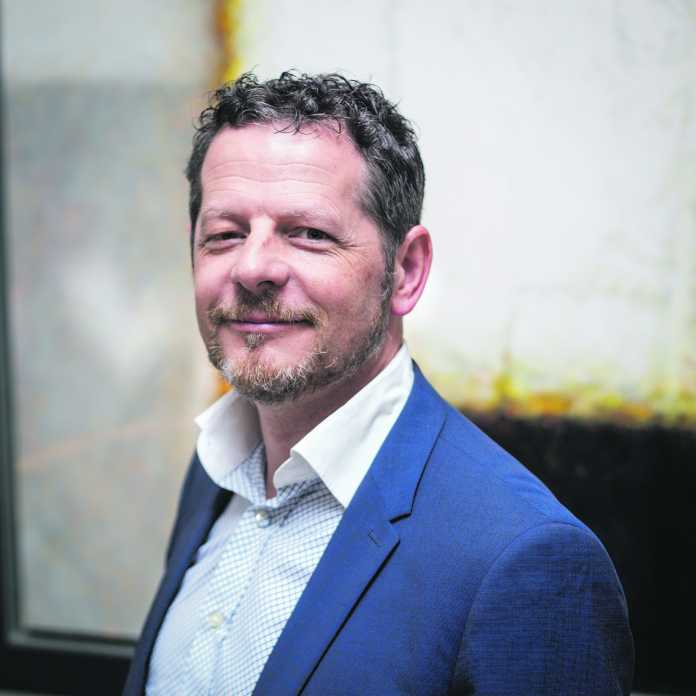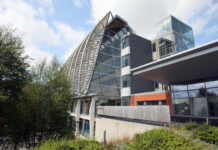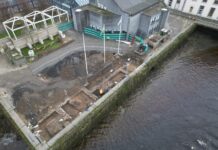
LIMERICK is on a journey of renaissance.
That’s how John Moran, European Investment Bank board member described the EIB’s reason to support the city’s transformation with €85m funding for the Opera Centre project.
This week, as the EIB’s funding was matched by the Council of Europe Bank (CEB), the former Department of Finance boss and Knight of the French Order merit holder said that getting the Opera Centre development right, with the public having their say, is the most important factor for its success.
“Speaking as an EIB board member, we follow European policies and provide funding that goes towards that policy work and among those are the rejuvenation and regeneration of downtown locations for cities.
“To that end, we are supporting the creation of high-end top quality office accommodation and that is the starting point.
“EIB is a AAA entity and its funding costs less. It is happy to pass on that credit to borrowers across Europe who are following projects that match up with our own ideas of the way Europe should progress.
Speaking personally, Mr Moran said that the original plan for the Opera site entailed “something that would resemble the Stephen’s Green centre in Dublin and when that fell apart, the city was able to secure the site and reimagine its potential in the context of the Limerick 2030 project.
“From my perspective, what we are going to see in Limerick is a far more suitable plan for the site than anything that was planned back in the noughties.
“We know that Limerick is becoming an attractive location for downtown industry. This will provide a significant amount of high quality office space for those kind of employers”.
Mr Moran said “in essence, this is a much better result for Limerick, so much so that I would go as far to say that Limerick got very lucky that the original project fell apart.
“We would have ended up with a very large shopping centre in the middle of town, but now there is that potential for a mixed use entertainment, office based project that is in walking distance of what is the Georgian heritage quarter and many places in the city”.
With the Opera plans being made available to the public, the native Limerick man said that this allowed the public to voice what they wanted or didn’t want to see in the space.
Speaking about the need for more residential options within the city, Mr Moran said that “my own submission, as a private individual and not as an EIB board member, was made public.
“In it, I did make the recommendation that the Georgian buildings along Patrick Street and Rutland Street would present a super opportunity for the city to showcase what could be done on a residential basis on those type of historical buildings.
“That would be a very useful add-on to the plans that have been distributed already to the local Councillors and the public.
“Nobody has closed minds on that and I think it is being debated but I don’t think it is the right answer to just look at one block as the answer to everything, because there is the potential for thousands and thousands (of units of) residential accommodation within a short walking distance”.
With less than 1,500 people living in the Georgian Quarter, the former Department of Finance boss said that he was aware of statistics presented by members of the architecture school at the University of Limerick suggesting that with the right planning and developed to the right standards, while using the laneways, “you could probably have 10,000 living in there”.
An addition like that to the city centre’s population would result in “a very vibrant town with them all strolling down the hill to work,” Mr Moran said.
Limerick’s big advantage is its desirability right now, as John Moran says that “it’s a city of a certain scale – big enough to be interesting but small enough to retain a great sense of community”.
“Even look at the imagery that came out from the turning on of the Christmas lights, that’s fabulous image and experience, but you need to be a city of a certain scale to be able to produce that, but small enough for it to be meaningful”.
Addressing the pace of the project, John Moran said that “there is a huge amount to be done in Limerick. This isn’t the only piece. I would love to see advancing in the O’Connell Street project but not what has been proposed to date”.
The Limerick man called on the proposal to be more imaginative but cautioned against “rushing things and getting it wrong”.
Mr Moran said that if similar projects to the Opera Centre and Gardens International had been undertaken five years ago, the lower rents paid then would not have supported the development in making Limerick so desirable and attractive to those looking to come in.
With rental prices half those of Dublin offices, Mr Moran said that there are better opportunities in Limerick to provide and develop quality buildings which will help attract in those firms with the city in their sights.
“Of course we would like to have everything done tomorrow but it is more important to get things right than to build it quickly,” he said.
To get projects right, Mr Moran agreed that joined up thinking and collaboration was essential.
“What we also need is the for the public to engage and i am quite strong on this. Whether it is the design for the rugby experience or whether it is the design for the plaza in front of the train station or whatever, the public has to have its say.
“Private developers are putting buildings up to maximise profit but when you are the Limerick 2030 you have a bigger purpose and you have to figure where this fits with the overall city and that comes back full circle to what the EIB supports.
“We supported this because it is the renaissance of a city that needs to recover and now it is on a journey to be repaired.”
See more Limerick news here








